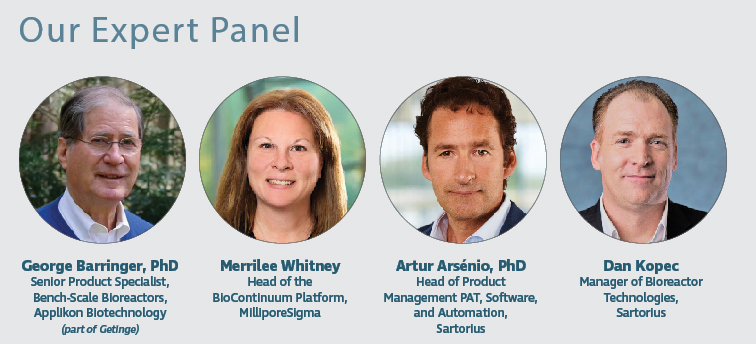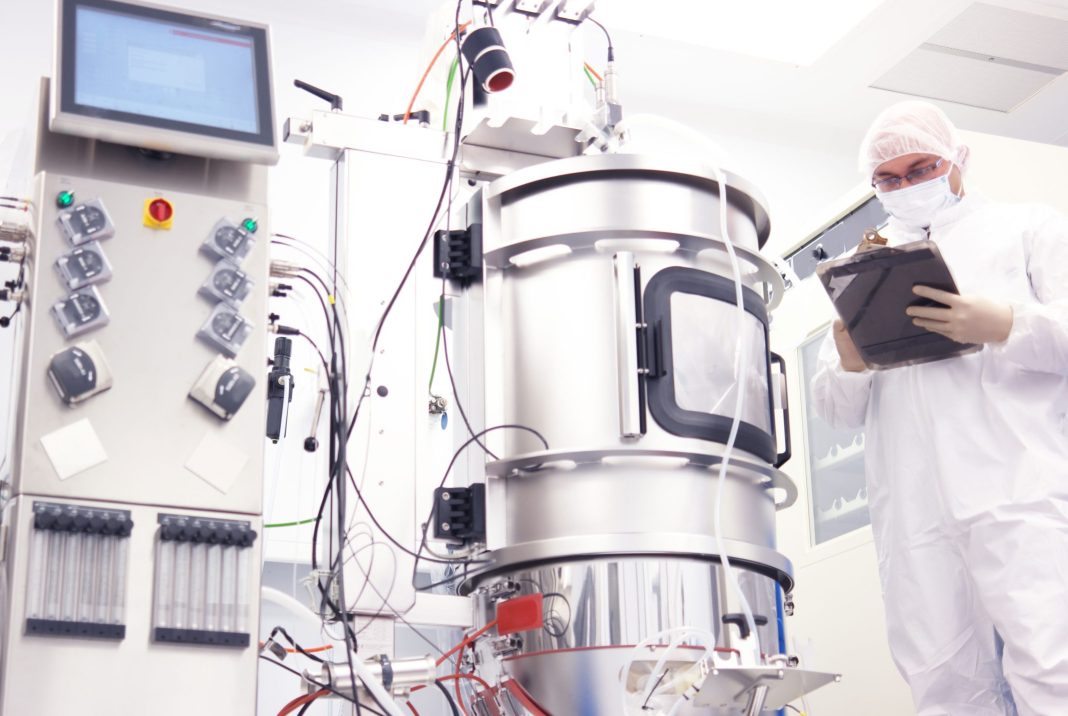Reaching Bioprocessing 4.0 depends on advanced methods of monitoring and control. For an update on these methods, GEN has organized this roundtable discussion. It presents the insights of four experts from three key technology and system providers.

GEN: What are the key factors that need to be addressed to help ensure successful bioprocessing monitoring and control operations?
Barringer: Systems for monitoring and control of bioprocesses must be designed for each application, and they must be operated and adapted to meet the standards of governing regulatory bodies. For example, cell and gene therapy processes are now performed in smaller vessels that have traditionally only been used for process development, but now must meet the standards for GMP production. Further contributing to successful bioprocesses, one should consider future-proofed automation systems. In addition, hardware, firmware, software, and human interfaces must meet current technology demands in sensors and process equipment while offering flexibility, extensibility, and integration capabilities to include technologies of the future. Finally, ease of use is a requirement in control systems to reduce error and improve operator and facility efficiencies.
Whitney: The incorporation of modern control strategies and process analytical technology, or PAT, tools for process monitoring is key to delivering consistent process performance and product quality. Successful bioprocess monitoring and control requires: integration of sensors/analytical technologies into the bioprocess to detect deviations in critical process parameters, CPPs, or critical quality attributes, CQAs; monitoring methods to know when action should be taken; and control logic for adjusting CPPs/CQAs to achieve the desired change and provide confirmation that the adjustment is effective. It is critical that the process instrumentation can detect real-time process variations and allow adaptive control of critical process parameters to ensure that this state of control is maintained.
Arsénio: When I look at individual companies—large and small—that have been successful in implementing advanced monitoring and control on the commercial scale, there are some common denominators that definitely provide a best path forward. I believe that success starts with a strong company commitment to the quality-by-design/PAT approach and digital innovation, early investment planning, buy-in from the scientific stakeholders, and unwavering support from high-level management. Also, there is a clear need to ensure additional laboratory bandwidth, in order to carry out the necessary experiments, and to place special focus on scalable solutions that simplify the journey toward manufacturing.
All these components are crucial to effectively engage in what is realistically a development and manufacturing paradigm shift from the status quo—manual processing methods and digital silos of data—to a more advanced automated and in-line monitoring and control approach of an end-to-end connected bioprocess.
GEN: What technologies and/or services do you offer clients to help them manage these important issues?
Barringer: Getinge’s Applikon bioreactor product line includes a range of vessel sizes in autoclavable vessels, in single-use vessels, and in sterilize-in-place/clean-in-place production vessels. These high-quality bioreactors are ready to support many applications from research to production.
Applikon control systems combine state-of-the-art, powerful, and simple-to-use operator interfaces for control and data acquisition—supervisory control and data acquisition, SCADA—that can be selected from a broad range of offerings in highly configurable systems to meet both performance and financial requirements. There isn’t just one Applikon bioreactor solution, but rather each is a user-specified product.
Our sales process takes into account the customer’s application needs at the start of development as well as into the future when the process becomes more sophisticated, optimized, and transferred into production. Built-in features such as totalized gas flow and gravimetric feed control can contribute to improved process control of a bioreactor from small to large scales. Further recipe development can be done using either our Lucullus process information management system or V-Control, Applikon’s DeltaV solution.
Today’s bioprocessing workflows emphasize PAT, including conventional dissolved oxygen, or DO, and pH sensors; fluorometric single-use pH and DO sensors; cell viability, cell density, optical density, and off-gas analysis technologies—all of which are available from Applikon. A very useful feature of all Applikon systems is the ability to incorporate sensors regardless of manufacture, technology, or application into a PID, or proportional integral derivative, control loop in the reactor control system, thus offering extensive opportunities to adapt the system to present and future requirements in bioprocesses, automation, and sensor technologies.
Whitney: Today, as a part of our BioContinuum platform, we have developed a portfolio that meets the needs of our customers in their intensified processing, PAT, advanced process control, and process data management goals.
The combination of our ProCellics Raman analyzer and Bio4C PAT Raman software enables in-line and real-time measurements of CCPs and CQAs from process development through manufacturing. This integrated Raman PAT platform helps improve processes, saves time, provides flexibility to operators, reduces the risk of contamination and batch failures, and enables implementation of nutrient control loop strategies, a first step toward automation.
When monitoring cannot be performed in-line, automated sampling is a key enabling technology for PAT. Modular automated sampling technology, or MAST, systems can take a sample from the process while maintaining its sterility and deliver the sample to a variety of analytical instruments for real-time analysis, without the need for human intervention. MAST systems promise to increase the availability of process data while reducing the manual burden for sample acquisition and processing.
Further, our offering in the digital space—namely, our bioprocess monitoring software, Bio4C ProcessPad—allows our customers to integrate all data from multiple sources, including their enterprise resource planning system, manufacturing execution system, laboratory information management system, and process equipment for effective process characterization, process improvement, and continuous process verification, among other purposes.
Kopec: This journey should not be one-sided. It is important to collaborate with technology suppliers who are well invested in the success of the technology. Look for those companies who are in it for the long term, have experience, and offer process consultation services and qualification support; who provide preconfigured, smart systems with off-the-shelf system control solutions that are ready to use and capable of providing seamless integration into flexible, low-footprint facilities, and that support rapid switch-over from product to product, allowing low maintenance requirements; and who can help you implement the journey toward digitalization.
Early in the process, the target technologies should be closely evaluated to ensure that they are meeting needed performance specifications; specifically, this applies to sensors, control systems, bioprocessing management software and data analytics, and risk mitigation approaches such as control fail-safes and sensor plausibility checks.

